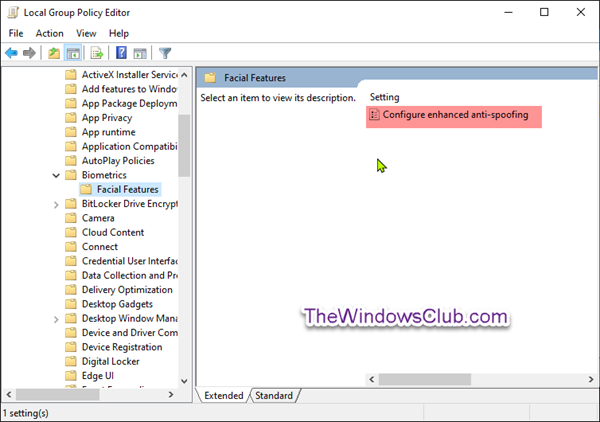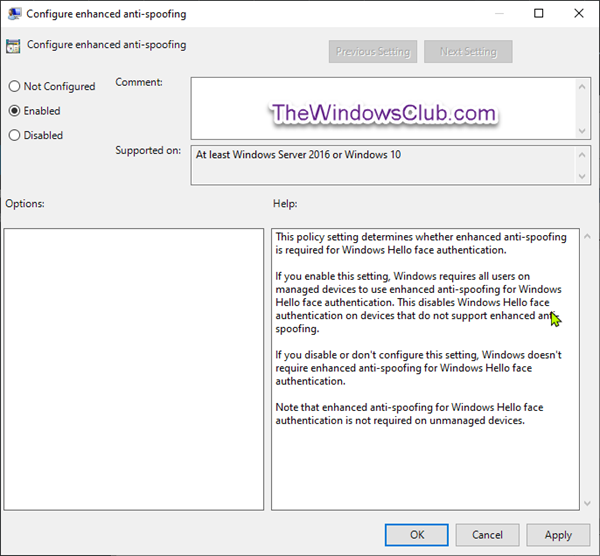Enable Enhanced Anti-Spoofing in Windows 10 Hello Face Authentication
If your Windows 10 PC supports Windows Howdy and you lot have set up facial recognition, then you can enable enhanced anti-spoofing. Windows Hullo is a biometrics-based technology that enables users to authenticate their identity in club to admission their devices, apps, networks, etc using fingerprint, face up recognition, or iris scan. Now confront detection in Windows 10 works well, but information technology tin't differentiate between a photograph of your face within your mobile or the bodily user face.
The potential threat considering of this issue is that someone with your photo could unlock your device by using their mobile. To overcome this difficulty, the anti-spoofing technology comes into action, and once you have enabled the anti-spoofing for Windows Howdy Face Authentication, a photo of the authentic user cannot exist used to login to the PC.
Enable Enhanced Anti-Spoofing for Howdy Face Hallmark
Enhanced anti-spoofing for Windows Hello face up authentication is not required on unmanaged devices and you must exist signed in equally an administrator to enable or disable enhanced anti-spoofing. To practise this:
Open the Local Group Policy Editor and on the left pane of Local Grouping Policy Editor, navigate to the following location:
Computer Configuration > Authoritative Templates > Windows Components > Biometrics > Facial Features.

On the right pane of Facial Features in Local Group Policy Editor, double-click Configure enhanced anti-spoofing policy to edit it.
This policy setting determines whether enhanced anti-spoofing is required for Windows Hullo face authentication.
If y'all enable this setting, Windows requires all users on managed devices to apply enhanced anti-spoofing for Windows Hello face authentication. This disables Windows Hi face up authentication on devices that do not support enhanced anti-spoofing.
If y'all disable or don't configure this setting, Windows doesn't require enhanced anti-spoofing for Windows Hello face authentication.
Annotation that enhanced anti-spoofing for Windows Hello face authentication is non required on unmanaged devices.

As indicated in the screenshot in a higher place, do the following;
To Disable Enhanced Anti-Spoofing for Windows How-do-you-do Face Authentication
- Click the radio button for Not Configured or Disabled, click OK.
To Enable Enhanced Anti-Spoofing for Windows Hello Face Authentification
- Click the radio button Enabled, click OK.
You can now exit Group Policy Editor and restart your arrangement.
The procedure described in a higher place won't work on Windows x Dwelling house Edition considering Grouping Policy Editor is not built into Domicile edition. However, to carry out the aforementioned procedure on Habitation edition, install PolicyPlus. Once you have added the utility, you tin can now follow the aforementioned steps as described to a higher place to enable Enhanced Anti-Spoofing for Windows 10 Home.

Source: https://www.thewindowsclub.com/enable-enhanced-anti-spoofing-for-windows-10-hello-face-authentication
Posted by: lanieragook1996.blogspot.com


0 Response to "Enable Enhanced Anti-Spoofing in Windows 10 Hello Face Authentication"
Post a Comment